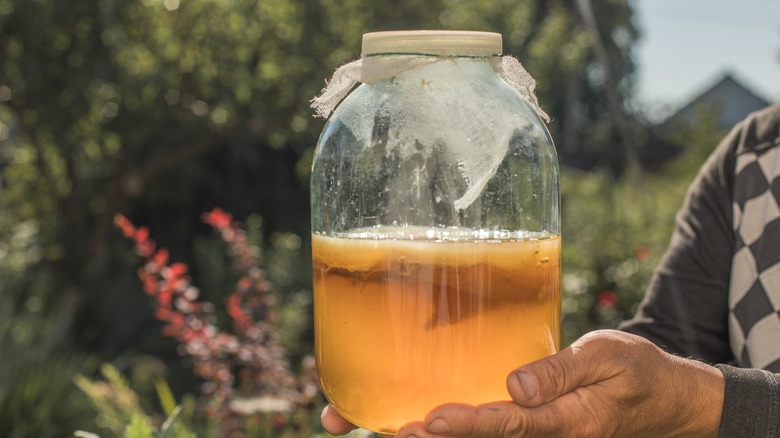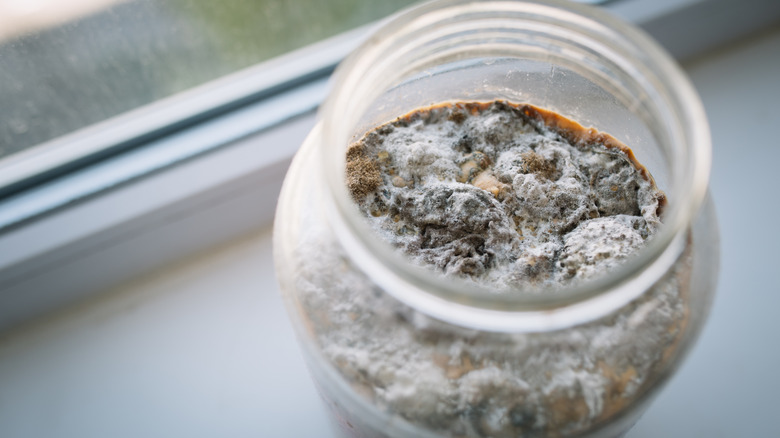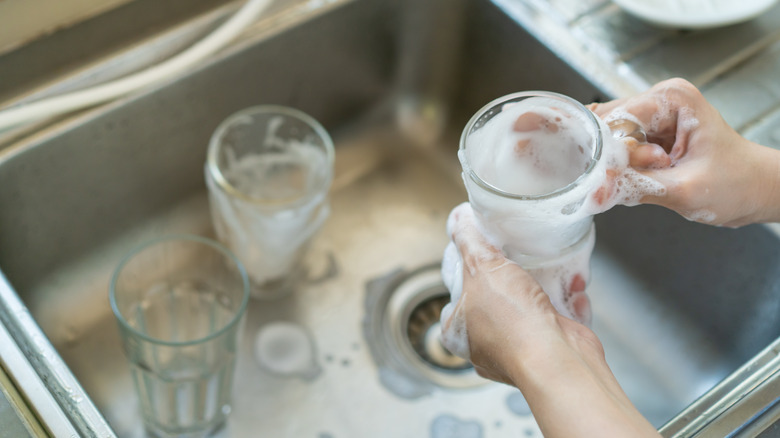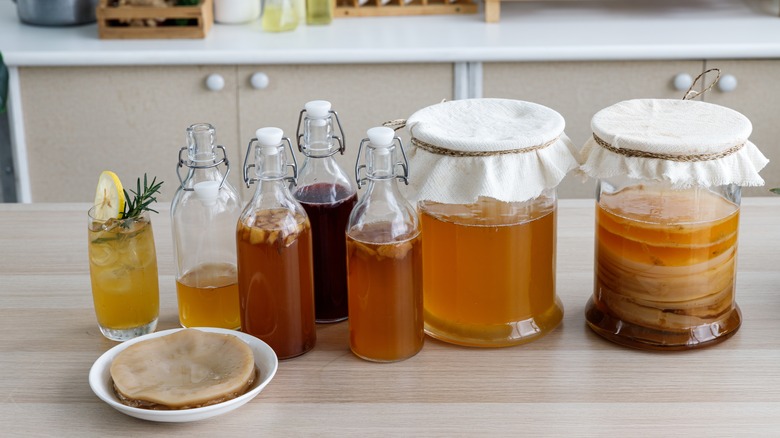Here's What To Do If Your Kombucha SCOBY Grows Mold
Kombucha mold isn't different from the common mold that grows on neglected loaves of bread.
As defined by the CDC, "mold is a fungal growth that forms and spreads on various kinds of damp or decaying organic matter." Molds are everywhere; mold spores float through the air constantly, even in an environment as sterile as an operating room. The EPA describes mold as "a natural part of the environment and can be found basically anywhere that moisture and oxygen are present." For better or worse, mold is an unavoidable part of life. Even kombucha isn't exempt, and the mold required to make this fermented brew isn't any less familiar.
Despite how common household mold is, it can be disheartening to lift off the lid of your carefully-crafted kombucha starter to find a fuzzy layer on top. Luckily, even though mold might not be totally avoidable, there are several strategies that help prevent it from developing in your SCOBY. The word SCOBY is an acronym for "symbiotic culture of bacteria and yeast," as per Healthline. It's the thick, cloudy mass that aids in the fermentation process.
In the meantime, the most important part of successful fermentation is making sure the product is safe, which starts by identifying mold and knowing how to handle it. If you think you've caught sight of a moldy SCOBY, here's what to do.
How to identify mold
First things first: stay calm.
The homebrewing blog Kombuchee says that most new brewers tend to jump to the worst-case scenario as they watch their kombucha ferment. Even when it's perfectly healthy, the development of SCOBY is kind of ugly. It's a layer of viscous, discolored-looking matter that begins clumping together on the kombucha's surface. It seems only natural to be skeptical that the process is going right. Kahm yeast and carbonation bubbles are also common features on the surface of kombucha, and they look worrying-at-best at a first glance. Rest assured, these things are normal.
The main difference between SCOBY and mold is fuzz. Brew Buch reports that spots of mold on the SCOBY's surface will look fuzzy or dry. They will also appear in a concentric circular pattern in a range of vivid colors: white-green, black, blue, or red. Since most mold species require oxygen to survive, these circles will appear on the surface of the kombucha, not immersed inside the liquid. If your SCOBY exhibits any of these signs, you might be dealing with mold.
How to handle a moldy SCOBY
Sadly, if your SCOBY has mold, it needs to be thrown out. You don't eat moldy berries or bread, right? A SCOBY that has been infected with mold is unsalvageable. You Brew Kombucha advises cleaning and sanitizing/sterilizing all brewing equipment that's come in contact with your kombucha and starting over with a new SCOBY and new starter tea. It's important to be thorough in removing any existing bacteria to prevent lingering mold spores from contaminating future batches. The main ingredient in any good homebrewed kombucha is safety.
For food-safe sterilization, You Brew Kombucha recommends iodine-based sanitizer Io Star. However, for a sanitizing regimen you can make at home, Revolution Fermentation suggests submerging your contaminated jars in a solution of one tablespoon bleach and 16 cups (4 liters) water for 30 seconds, then rinsing thoroughly. By following this method, it says, mold spores or micro-organisms will remain, but not in sufficient enough quantities to contaminate fermentation. The best offense is a good defense.
How to prevent mold in the future
Instead of pouring all your hard work literally down the drain, it's better to prevent your SCOBY from developing mold in the first place.
According to Preserved Goods, a common mistake amongst new homebrewers that leads to mold is not using enough starter liquid. The starter liquid, it says, is the mature kombucha from your previous batch; the ratio should be two cups of starter liquid per gallon of new tea.
Refrigeration might seem like a good idea for keeping most foods fresh, but for kombucha, the opposite is true. Homebrewer Yea Bucha explains that colder temperatures (specifically, below 64 degrees Fahrenheit) slow down fermentation. Since the fermentation process is what produces the acidic pH that stops mold from growing, it's important that your kombucha acidifies fast enough to stay clean. For best results, keep kombucha around 70 degrees, via Cultures for Health.
Kombucha's starting pH should be at or under 4.5, via Fermentatholics; it'll drop to between 2.5 and 3.5 after fermentation. For a sweeter taste, it says, aim for the higher pH at 3.5. If you like your kombucha tart, let it ferment longer until the pH hits 2.5 (but no lower than that). Brew Buch says that mold is most likely on the "first fermentation when the kombucha acidity isn't high enough to fend off the bad bugs." If your SCOBY gets mold, just try again!



